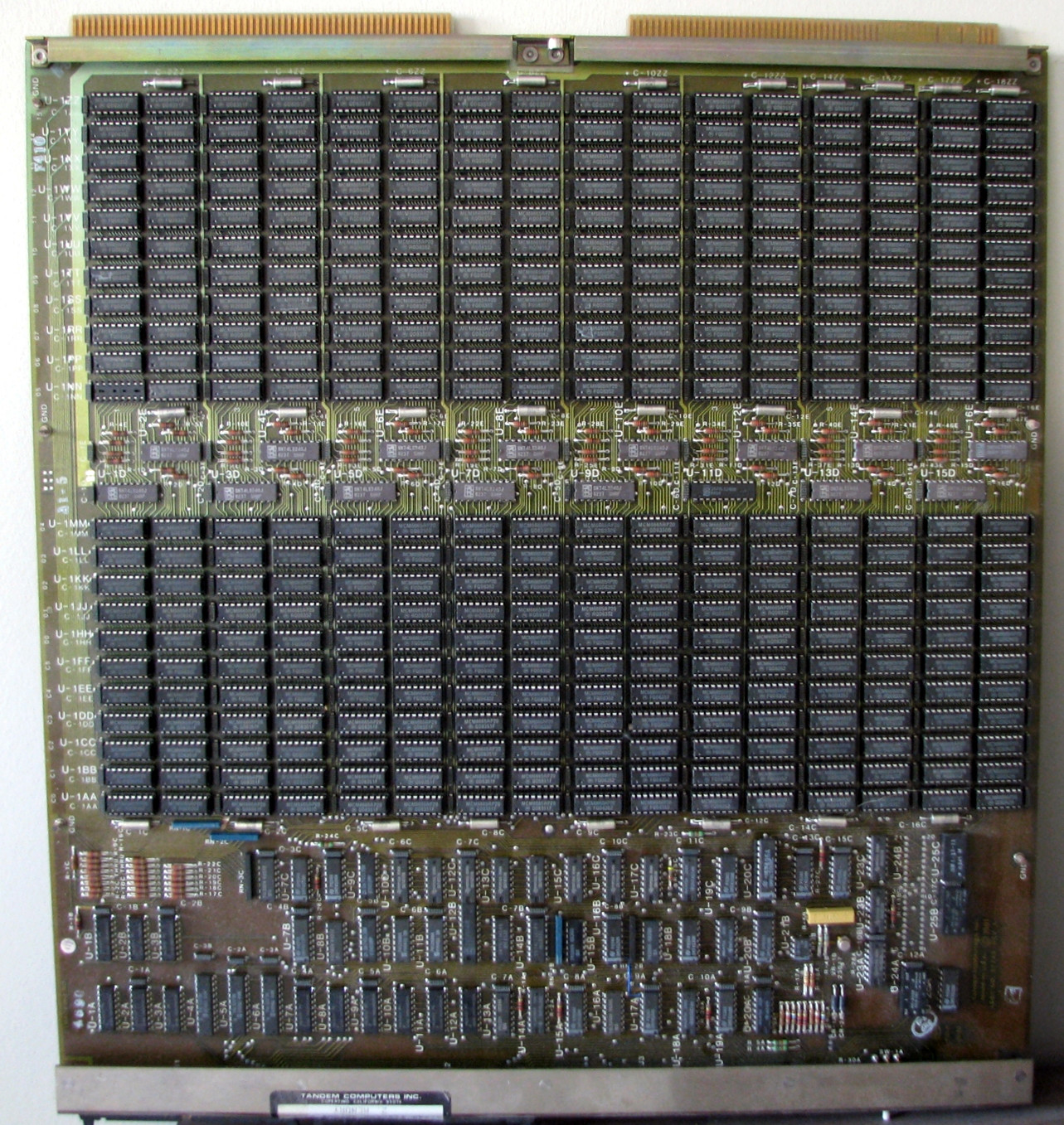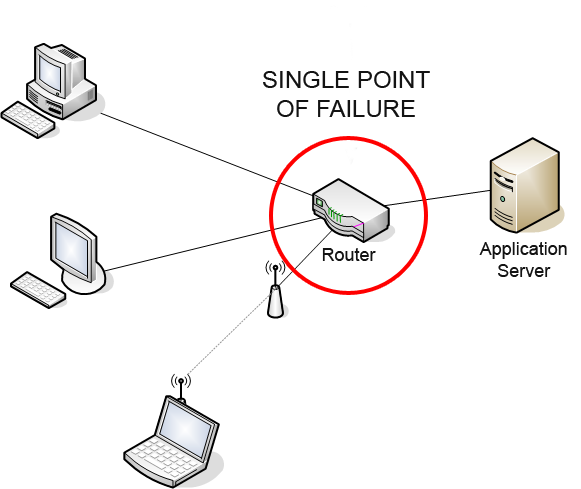|
TACL
TACL (the Tandem Advanced Command Language) is the scripting programming language which acts as the shell in Tandem Computers. History Tandem Computers were originally designed and sold by Tandem Computers, Inc., based in Cupertino, CA. These were the first commercially available parallel processing computers, then referred to as "mini-computers". Tandem's strategy was the emerging concept of "continuous availability" for applications requiring near-total uptime, in which single points of failure were minimized through mirrored storage devices, controllers and software, and operating systems engineered specifically for fault tolerance (Guardian, and later NonStop Kernel or NSK). In computing, a single point of failure refers to any scenario in which the failure of a single component, application or process could result in broader impacts such as data loss or the cascading failure of the system. The relative likelihood of multiple component or process failures within a short time is ... [...More Info...] [...Related Items...] OR: [Wikipedia] [Google] [Baidu] |
Scripting Programming Language
A scripting language or script language is a programming language that is used to manipulate, customize, and automate the facilities of an existing system. Scripting languages are usually interpreted at runtime rather than compiled. A scripting language's primitives are usually elementary tasks or API calls, and the scripting language allows them to be combined into more programs. Environments that can be automated through scripting include application software, text editors, web pages, operating system shells, embedded systems, and computer games. A scripting language can be viewed as a domain-specific language for a particular environment; in the case of scripting an application, it is also known as an extension language. Scripting languages are also sometimes referred to as very high-level programming languages, as they sometimes operate at a high level of abstraction, or as control languages, particularly for job control languages on mainframes. The term ''scripting langu ... [...More Info...] [...Related Items...] OR: [Wikipedia] [Google] [Baidu] |
Shell (computing)
In computing, a shell is a computer program that exposes an operating system's services to a human user or other programs. In general, operating system shells use either a command-line interface (CLI) or graphical user interface (GUI), depending on a computer's role and particular operation. It is named a shell because it is the outermost layer around the operating system. Command-line shells require the user to be familiar with commands and their calling syntax, and to understand concepts about the shell-specific scripting language (for example, bash), while graphical shells place a low burden on beginning computer users and are characterized as being easy to use, yet most GUI-enabled operating systems also provide CLI shells, normally for performing advanced tasks. Overview Operating systems provide various services to their users, including file management, process management (running and terminating applications), batch processing, and operating system monitoring and con ... [...More Info...] [...Related Items...] OR: [Wikipedia] [Google] [Baidu] |
Tandem Computers
Tandem Computers, Inc. was the dominant manufacturer of fault-tolerant computer systems for Automated teller machine, ATM networks, banks, stock exchanges, telephone switching centers, and other similar commercial transaction processing applications requiring maximum uptime and zero data loss. The company was founded by Jimmy Treybig in 1974 in Cupertino, California. It remained independent until 1997, when it became a server division within Compaq. It is now a server division within Hewlett Packard Enterprise, following Hewlett-Packard's acquisition of Compaq and the split of Hewlett Packard into HP Inc. and Hewlett Packard Enterprise. Tandem's NonStop (server computers), NonStop systems use a number of independent identical processors and redundant storage devices and controllers to provide automatic high-speed "failover" in the case of a hardware or software failure. To contain the scope of failures and of corrupted data, these multi-computer systems have no shared central comp ... [...More Info...] [...Related Items...] OR: [Wikipedia] [Google] [Baidu] |
Cupertino, California
Cupertino ( ) is a city in Santa Clara County, California, United States, directly west of San Jose on the western edge of the Santa Clara Valley with portions extending into the foothills of the Santa Cruz Mountains. The population was 57,820 as of the 2020 census. It is known for being the home of Apple Inc., headquartered at Apple Park. Etymology Cupertino was named after '' Arroyo'' ''San José de Cupertino'' (now Stevens Creek). The creek had been named by Spanish explorer Juan Bautista de Anza's cartographer, who named it after Saint Joseph of Cupertino. Saint Joseph ( it, Giuseppe da Copertino) was born Giuseppe Maria Desa, and was later named after the town of Copertino, where he was born, in the Apulia region of Italy. The name ''Cupertino'' first became widely used when John T. Doyle, a San Francisco lawyer, and historian, named his winery on McClellan Road ''Cupertino''. After the turn of the 20th century, Cupertino displaced the former name for the region, which ... [...More Info...] [...Related Items...] OR: [Wikipedia] [Google] [Baidu] |
Single Point Of Failure
A single point of failure (SPOF) is a part of a system that, if it fails, will stop the entire system from working. SPOFs are undesirable in any system with a goal of high availability or reliability, be it a business practice, software application, or other industrial system. Overview Systems can be made robust by adding redundancy in all potential SPOFs. Redundancy can be achieved at various levels. The assessment of a potential SPOF involves identifying the critical components of a complex system that would provoke a total systems failure in case of malfunction. Highly reliable systems should not rely on any such individual component. For instance, the owner of a small tree care company may only own one woodchipper. If the chipper breaks, he may be unable to complete his current job and may have to cancel future jobs until he can obtain a replacement. The owner of the tree care company may have spare parts ready for the repair of the wood chipper, in case it fails. At ... [...More Info...] [...Related Items...] OR: [Wikipedia] [Google] [Baidu] |
Compaq
Compaq Computer Corporation (sometimes abbreviated to CQ prior to a 2007 rebranding) was an American information technology company founded in 1982 that developed, sold, and supported computers and related products and services. Compaq produced some of the first IBM PC compatible computers, being the second company after Columbia Data Products to legally reverse engineer the IBM Personal Computer. It rose to become the largest supplier of PC systems during the 1990s before being overtaken by Dell in 2001. Struggling to keep up in the price wars against Dell, as well as with a risky acquisition of DEC, Compaq was acquired for US$25 billion by HP in 2002. The Compaq brand remained in use by HP for lower-end systems until 2013 when it was discontinued. Since 2013, the brand is currently licensed to third parties for use on electronics in Brazil and India. The company was formed by Rod Canion, Jim Harris, and Bill Murto, all of whom were former Texas Instruments senior managers. ... [...More Info...] [...Related Items...] OR: [Wikipedia] [Google] [Baidu] |
Hewlett-Packard
The Hewlett-Packard Company, commonly shortened to Hewlett-Packard ( ) or HP, was an American multinational information technology company headquartered in Palo Alto, California. HP developed and provided a wide variety of hardware components, as well as software and related services to consumers, small and medium-sized businesses ( SMBs), and large enterprises, including customers in the government, health, and education sectors. The company was founded in a one-car garage in Palo Alto by Bill Hewlett and David Packard in 1939, and initially produced a line of electronic test and measurement equipment. The HP Garage at 367 Addison Avenue is now designated an official California Historical Landmark, and is marked with a plaque calling it the "Birthplace of 'Silicon Valley'". The company won its first big contract in 1938 to provide test and measurement instruments for Walt Disney's production of the animated film ''Fantasia'', which allowed Hewlett and Packard to formally esta ... [...More Info...] [...Related Items...] OR: [Wikipedia] [Google] [Baidu] |
NonStop (server Computers)
NonStop is a series of server computers introduced to market in 1976 by Tandem Computers Inc., beginning with the NonStop product line, which was followed by the Hewlett-Packard Integrity NonStop product line extension. It is currently offered by Hewlett Packard Enterprise since Hewlett-Packard Company's split in 2015. Because NonStop systems are based on an integrated hardware/software stack, HPE also developed the NonStop OS operating system for them. NonStop systems are, to an extent, self-healing. To circumvent single points of failure, they are equipped with almost all redundant components. When a mainline component fails, the system automatically falls back to the backup. These systems are often used by banks, stock exchanges, payment applications, retail companies, energy and utility services, healthcare organizations, manufacturers, telecommunication providers, transportation and other enterprises requiring extremely high uptime. History Originally introduced in 197 ... [...More Info...] [...Related Items...] OR: [Wikipedia] [Google] [Baidu] |
Redundancy (engineering)
In engineering, redundancy is the intentional duplication of critical components or functions of a system with the goal of increasing reliability of the system, usually in the form of a backup or fail-safe, or to improve actual system performance, such as in the case of GNSS receivers, or multi-threaded computer processing. In many safety-critical systems, such as fly-by-wire and hydraulic systems in aircraft, some parts of the control system may be triplicated, which is formally termed triple modular redundancy (TMR). An error in one component may then be out-voted by the other two. In a triply redundant system, the system has three sub components, all three of which must fail before the system fails. Since each one rarely fails, and the sub components are expected to fail independently, the probability of all three failing is calculated to be extraordinarily small; it is often outweighed by other risk factors, such as human error. Redundancy may also be known by the terms "m ... [...More Info...] [...Related Items...] OR: [Wikipedia] [Google] [Baidu] |
Transaction Application Language
Transaction Application Language or TAL (originally "Tandem Application Language") is a block-structured, procedural language optimized for use on Tandem Computers, Tandem hardware. TAL resembles a cross between C (programming language), C and Pascal programming language, Pascal. It was the original system programming language for the Tandem Complex instruction set computer, CISC machines, which had no assembly language#Assembler, assembler. The design concept of TAL, an evolution of Hewlett Packard's System programming language, SPL, was intimately associated and optimized with a Microcode, microprogrammed CISC instruction set. Each TAL statement could easily compile into a sequence of instructions that manipulated data on a transient floating register stack. The register stack itself floated at the crest of the program's call stack, memory allocation and call stack. The language itself has the appearance of ALGOL or Pascal (programming language), Pascal, with BEGIN and END stateme ... [...More Info...] [...Related Items...] OR: [Wikipedia] [Google] [Baidu] |
KornShell
KornShell (ksh) is a Unix shell which was developed by David Korn at Bell Labs in the early 1980s and announced at USENIX on July 14, 1983. The initial development was based on Bourne shell source code. Other early contributors were Bell Labs developers Mike Veach and Pat Sullivan, who wrote the Emacs and vi-style line editing modes' code, respectively. KornShell is backward-compatible with the Bourne shell and includes many features of the C shell, inspired by the requests of Bell Labs users. Features KornShell complies with POSIX.2, Shell and Utilities, Command Interpreter (IEEE Std 1003.2-1992.) Major differences between KornShell and the traditional Bourne shell include: * job control, command aliasing, and command history designed after the corresponding C shell features; job control was added to the Bourne Shell in 1989 * a choice of three command line editing styles based on vi, Emacs, and Gosling Emacs * associative arrays and built-in floating-point arithmet ... [...More Info...] [...Related Items...] OR: [Wikipedia] [Google] [Baidu] |






.jpg)
